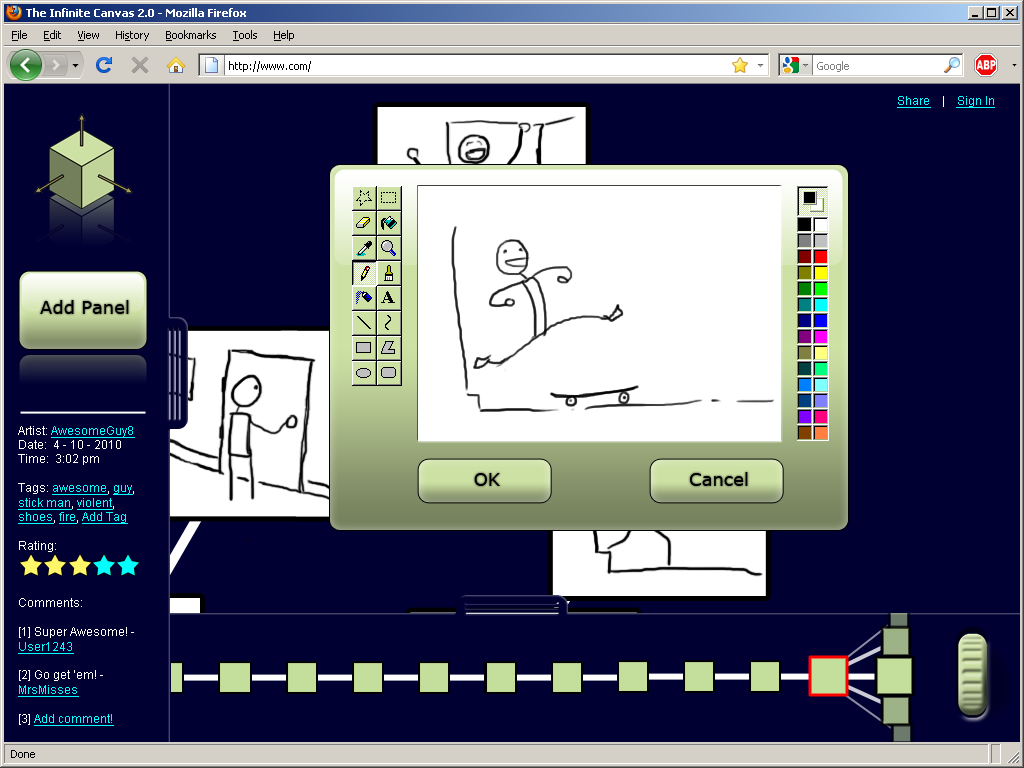Infinite Canvas 2.0
Technological Innovations in Social Storytelling with Sequential Art

Summary
This is the home of my Masters Capstone project. The overall concept involves bringing Scott McCloud’s idea of the Infinite Canvas into the social arena of Web 2.0.
The prototype was built using JQuery.
The final paper can be found here (.pdf, 3.49MB).
The final presentation can be viewed as a PDF here (.pdf, 11.6MB). A video of the final presentation can be found here: http://vimeo.com/13216700.
Introduction
Comics, as most people think about them, have been around since the late 1700s. They range from short political cartoons to super hero comic books to graphic novels.
Comics is, however, a much more diverse medium. Influential comic book writer and artist Will Eisner defined comics as “sequential art” . Scott McCloud, a highly respected comic theorist, expands this with his own definition of “juxtaposed pictorial and other images in deliberate sequence”. Under these definitions, the word “comics” can be applied to early cave paintings and Egyptian hieroglyphics.
The most recent format for comics is the web comic. Web comics are, as the name implies, comics that are posted on the web. While web comics can be traced back to Usenet, they became popular in the late 1990s with the start of such comics as Penny Arcade and PVP.
Until recently, comics were confined to the physical dimensions of the medium that the comic is created in. In 1999, McCloud introduced the concept of what is commonly known as the Infinite Canvas . Computer screens could be thought of as windows that could be used to view a comic, allowing panels to be placed in any direction and made in any size, only limited by the creator’s imagination. Comics could be virtually limitless.
Unfortunately, with the exception of a few experimental comics, the infinite canvas never took off. McCloud attributes this to both technical and mental limitations. At the time, screen sizes were limited. Broadband access was rare and expensive. User mental models were still stuck in “Web 1.0” where pages were static and literally used as pages, linking to other pages.
Web comics utilized this ‘page paradigm’ and more or less remediated comic books and comic strips onto the web. Aside from the few “mad scientist experiments” , web comics did not take advantage of their new medium and the Infinite Canvas was forgotten.
Today, we are in the midst of Web 2.0. Web 2.0 is defined by dynamic sites, social media, and rich internet apps. There is no reason that the Infinite Canvas cannot take advantage of these traits and become a rich, dynamic, social experience. It could be resurrected as an Infinite Canvas 2.0, if you will.
Continue reading the final paper here (.pdf, 3.49MB).